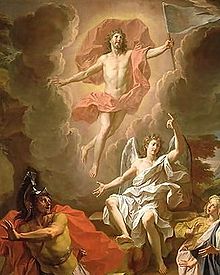May 29. On this date in 1921,
Alessandro Bausani was born in Rome. He was a noted Italian Orientalist and convert to the Bahá'í Faith.
BAUSANI, ALESSANDRO (b. Rome, Italy, 29 May 1921; d. Rome, 11 March 1988), prolific Italian Orientalist in several fields: Persian Literature, Islam, linguistics, the history of Islamic science, Urdu, Indonesian, and other Islamic literatures. His family was Roman Catholic and his father, who exerted a strong influence over him, was a particularly strict observer, being a member of the laic Dominican Tertiary Order. From childhood he showed an exceptional interest in languages and invented a language when playing games with his only sister. He later discovered that the grammatical structure of this language was very similar to that of Turkish. He published an analytical description of this language, which he had named Markusko, in a booklet,
Le lingue inventate (Rome, 1974, of which there is also an earlier version in German,
Geheim und Universal Sprachen, Stuttgart 1970). This won him the honorary chairmanship of the Centro Italiano di Interlinguistica, whose members were mostly interested in Esperanto, a language cultivated by Bausani himself. It is not surprising that during his adolescence he studied the main European languages and, later on, languages such as Basque, to which he dedicated some articles of such merit that he was elected as a member of the Royal Academy of the Basque Language.
At an early age he also began studying Arabic with one of his neighbors, the well-known Italian Arabic scholar, Virginia Vacca. Francesco Gabrieli in his obituary (Rome, 1991, p. IX) pointed out that in 1940 Bausani had already exhibited in his first Arabic language test a remarkable grasp of the language. Consequently, he took an interest in the Near and Middle East and attended courses at IsMEO (see
ITALY xv. IsMEO, Istituto per il Medio ed Estremo Oriente), the Institute for Middle and Far Eastern Studies, founded by Giuseppe Tucci, and at PIO, the Pontificio Istituto Orientale, run by Jesuits, where in 1943-44 he studied Turkish with Mgr. Paul Mulla (1882-1959) a Cretan Turk who had converted to Catholicism. His Persian was soon so fluent that during the Second World War, when he was only 21, he directed a radio program in Persian transmitted by Radio Roma. In any case, he followed what was at the time the normal humanistic curriculum: he attended a secondary school specializing in classical studies (Latin and Greek) and then the Faculty of Arts at Rome University La Sapienza where he took his degree in 1943, defending a thesis on “The Historical Development of Neo-Persian Syntax.” At the university, he had the opportunity of studying under Francesco Gabrieli (d. 1996), Ettore Rossi (d. 1955), and Michelangelo Guidi (d. 1946). With Guidi, Bausani shared not only an academic interest in religious phenomena but also deep religious beliefs that set him on a quest and an inner search that would eventually lead to his conversion to Baha’ism. The exact date of his conversion is not known. In 1949, he wrote a letter to his father from which we can assume that he had already abandoned Catholicism. On the basis of several of his public speeches, there seems to have been a brief attraction to Protestantism and, in all likelihood, to Islam. Certainly he was a Baha’i by 1955 when he married a Baha’i, and the ceremony was performed according to Baha’i rituals.
The acceptance of the Baha’i faith marked the end of a certain uneasiness that he had experienced in the post-war period, especially after 1948, when the Christian Democratic Party won the first free elections in Italy, contrary to all expectations. Like other Catholic intellectuals who had been strongly anti-fascist, he joined a small group of so-called Catholic Communists for a certain period. They were later excommunicated by Pope Pius XII (d. 1958), but continued their activity under the title of The Christian Left. Then, for about two years, he was a member of the Italian Communist Party. After he left the Communist Party, he no longer took an active part in politics, although for a long time he supported Aldo Capitini (d. 1968). The latter was a celebrated politician and philosopher of religion, much influenced by Gandhi and was engaged in a non-violent pacifist movement that acted through the network of Centers of Religious Guidance (COR) with a large following among progressive Catholics.
Bausani’s involvement in Baha’ism affected his research: his
Saggi sulla fede Bahāʾi, a testimony to his role in the Italian Baha’i community, was published posthumously (Rome, 1991), but his academic works on the topic are numerous (for example: “Religioni nuove sorte dall’Islam,”
Storia delle religioni, 6th ed., Turin, 1970-71, V, pp. 213-74; or the entries Bāb, Bābis, Bahāʾ-Allāh, Bahāʾīs, all in
EI2). Baha’ism also influenced his Italian translation of the Qurʾān (Florence, 1955). Although many other translations have been published subsequently, Italian scholars generally continue to favor Bausani’s, both for its accuracy and for its literary style, which is somehow imbued with the aura of Qur’ānic Arabic, as well as affected by his own personal religious commitment (Scarcia Amoretti,
OM, 1991,pp. 516-17). To be precise, Bausani understood (“Postille a Cor. II, 248; XXXIX, 23; XX, 15,”
Studi orientalistici in onore di Giorgio Levi Della Vida, Rome, 1998, pp. 32-51, esp. p. 51) the expression
ḵ-ātam al-nabiyyin (Q. xxxiii, 40, referring to the Prophet Mohammad) in Baha’i terms: Mohammad, as with all past and future prophets, was the “seal” only of his temporal cycle.
He was a member of many academies and orientalist associations, but he was particularly proud of belonging to the Accademia dei Lincei: in 1967 he was made Corresponding Member, and National Member in 1983. The Accademia dei Lincei was founded in 1603 by Federico Cesi, a young Italian aristocrat interested in the more esoteric aspects of Arabic and the Orient, for the implementation of research in the fields of the natural sciences, mathematics, and philosophy. Galileo Galilei was among its members. Today, the Accademia administers Leone Caetani’s (d. 1935, the author of the
Annali dell’Islam) personal oriental library, where Bausani worked as a librarian for some years up to 1958. He was also president (1978-83) of the Istituto per l’Oriente, founded in 1921 by Carlo Alfonso Nallino, the eminent historian of medieval sciences and ancient astronomy, to further research the contemporary history of Middle Eastern Muslim countries. In 1976 he received the National Award of the Presidency of the Italian Republic for his excellence in philology.
He held the Chair of Islamic Studies at Rome University La Sapienza from 1971 until his death, and at La Sapienza he was the director of the Institute of Islamic Studies. His “Cinquant’anni di islamistica” (Fifty years of Islamic Studies) (
Gli studi sul Vicino Oriente in Italia dal 1921 al 1970 II, pp. 1-26), possibly his most important survey of the development of Islamic Studies in Italy, was published during his first year in the Chair. In it he tackled the following crucial issues: Islamic Studies as an independent subject of study within the broad field of history; the need to overcome the traditional subordination to philology, in particular to Arabic philology; the importance of learning not only Arabic but also other Middle Eastern languages; as well as presenting a diachronic approach to Islam itself (Calasso,
OM, 1998, pp. 453-55); the definition of Islam as a monotheistic (and rationalistic) religion; the assumption that Qurʾānic monotheism differs sharply from the Christian conception of a unique God in so far as it is an absolute and primary monotheism like Judaism, given its origin in a non-monotheistic context. Such a difference expresses itself in a unitary cultural system that can be referred to as žIslamic,’ recognizable in both its central and peripheral manifestations in Sunnism and in Shiʿism. Consequently, it is historically and culturally incorrect to privilege one “expression” of Islam over another; the only possible exception may arise in the context of “contemporary” Islam, closely enmeshed as it is in politics and Western ideas.
His academic career began before 1971. He taught Persian language and literature in Rome from 1944 to 1956, when he left to become Professor of Persian at Naples at the Istituto Universitario Orientale. The period in Rome is divided between his academic research on modern Persian literature (“Un ghazal di Qurratu’l-ʿAin,”
OM 29, 1949, pp. 190-92), in particular on
Moḥammad Iqbāl and his many poetical works, which Bausani translated and annotated (e.g., the
Jāvidnāma,
Il poema celeste, Rome, 1952), and regular contributions to an important Italian review,
Studi e materiali di Storia delle Religioni. It was here that he published, his “Note per una tipologia del monoteismo” (vol. 28 pp. 67-88; Notes towards a typology of monotheism), which is still considered a significant point of reference for the definition of
tawḥid. In this same period he began to publish articles on religious subjects for a wide audience, as well as his “Letterature islamiche” in
Islamologia, a comprehensive handbook compiled by Felix M. Pareja (Rome, 1951, pp. 594-688). The variety of topics he dealt with throughout his career may seem eclectic and unfocused, but only at the first glance. For example, Bausani’s interest in Iqbāl had different implications. On the one hand, he wanted to prove that within Islam there was the possibility of inducing a modern approach without denying the existing tradition. There are two main foci in his view of the nature of Islamic tradition. The first is the promotion of scientific research that took place in medieval Middle Eastern societies as a result of their acceptance of Islam. Biruni is the best example (“Al-Bīrūnī, un grande pensatore del Medioevo islamico, nel millenario della nascita,”
RSO 48, 1974, pp. 75-97; “Christian Trinity in al-Bīrūnī and Ibn Rushd Scientific vs. Philosophical method,”
The Commemoration volume of BīrūnīInternational Congress in Tehran, Tehran, 1976, pp. 479-93), although a scientific approach to reality can be traced in some Sufi medieval poets and thinkers (“Niẓāmī di Gangia e la žpluralitá dei mondi’,”
RSO 46, 1971, pp. 197-215; “Note su alcuni aspetti žscientifici delle
Fūtūḥāt Makkiyya di Ibn ʿArabī,”
RSO 52, 1978, pp. 199-215) and also, for example, in the treatises of the Eḵ-wān al-Ṣafā (q.v.;
L’Enciclopedia dei Fratelli della Puritā. Riassunto, con Introduzione e breve commento, dei 52 Trattati o Epistole degli Ikhwān as-Safāʾ, Naples, 1978). The second one inspired some of his major works and relates to Persia after the Muslim conquest and its subsequent role in the making of Islamic civilization. From his perspective a reformed Islam, such as the one he attributed to Iqbāl, would be capable of discouraging a drift into a kind of chauvinistic extremism inherent in all nationalistic movements (as those active in all the Muslim world after the end of the Second World War, labeled by him “auto-colonialism”), and at the same time, combating the fundamentalist element in a religious-based ideology. The failure of Iqbāl’s model, which for a long time Bausani associated with Pakistan (Bredi,
OM, 1998, pp. 443-52), a country that he loved and visited often, partly accounts for his indifference to contemporary topics concerning the Middle East in the last phase of his life.
On the other hand, Iqbāl’s familiarity both with Persian and Urdu may have further stimulated Bausani’s interest in Urdu literature, again within the framework of Pakistan. His
Storia delle letterature del Pakistan: Urdu, Pangiābī, Sindhī, Belucī, Pasc’tō, Bengali Pakistana, Milan, 1958 (2nd rev. ed., Florence and Milan, 1968) is still an indispensable work of reference. Nonetheless, Islam in the context of non-Arabic countries was a topic that Bausani cultivated during different periods of his career (e.g., “L’Islam non arabo,”
Storia delle Religioni, 6th ed. V, Turin, pp. 179-211; “L’Islam indonesiano,”
Attidel Convegno internazionale sul temaAspetti dell’Islam marginale, Rome, 1983, pp. 1-24). Yet his focus on Southeast Asia (
Le letterature del sud-est asiatico: Birmana, siamese, laotiana, cambogiana, vietnamita, giavanese, malese-indonesiana, filippina, Florence and Milan, 1970;
Malesia: Poesie e leggende, Milan, 1963), beside his knowledge of the many local languages (“Note sui vocaboli persiani in malese-indonesiano,”
AIUON, n.s. 14, 1964, pp. 1-32; “Notes on Persian Words in Tamil,”
Proceedings of the Second Conference of
Tamil Studies I, Madras, 1971, pp. 460-78), was due to his love for geography and, consequently, for travel literature (
L’Indonesia nella relazione di viaggio di Antonio Pigafetta, Rome, 1972), and for everything that had to do with the sea (see his articles in
L’Italia nel Kitāb al-Bahriyye di Piri Reis, collected by L. Capezzone, “Eurasiatica,” Venice, 29 May 1990; “Le maree nei
Murūgal-Dhahab di al-Masʿūdī (m. 956
),”
OM 60, 1980, pp. 63-67; “Osservazioni su alcuni lessici marinareschi dell’Oceano Indiano e del Mar Rosso,”
AIUON 19, 1969, pp. 487-520).
Considering what has been said so far, it is possible to place in an appropriate perspective two other distinctive features of Bausani’s concept of Islam’s distinctiveness: first of all, the notion of “Islamic languages” (“Le lingue islamiche: interazioni e acculturazioni,”
Il mondo islamico tra interazione e acculturazione, ed. A. Bausani andB Scarcia Amoretti, Rome, 1981, pp. 3-19); secondly, the rejection of the label of “pagan survivals” in relation to the eventual debt of Muslim societies to rituals and customs that existed prior to their acceptance of Islam (“ žSopravvivenze pagane nell’islam’ o integrazione islamica?,”
SMSR 37, 1966, pp. 189-209). He speaks, instead, of “integration” to highlight the peculiar interaction between Islam and the civilizations it came in contact with (“L’Islam: integrazione o sincretismo religioso?,”
Incontro di religioni in Asia tra il III e il X secolo, Florence, 1984, pp. 99-114). In both cases, Bausani takes into account the indifference of medieval Muslim scholars to anything sounding “ethnic”: an attitude, according to him, more widespread in the Muslim world than in pre-modern Christian culture. Muslims, in his opinion, were always well aware of belonging to the same civilization. This consciousness originates from professing a common religion, which attributes a special status to Arabic—written Arabic in particular—as the language of the Qurʾān. On a linguistic level, the large number of Arabic words and expressions, often of Qurʾānic origin, in the “national” or “local” languages of populations which accepted Islam, is not the result of an encounter between native Arabic speakers and speakers of other languages. The Arabic vocabulary, together with the concepts expressed by it, were introduced by the elites of the very peoples who learnt, and eventually adopted literary, written Arabic as a sign of their persisting hegemonic role. Bausani calls “osmosis from above” such a learned process that deeply affected the illiterate classes, enhanced their Muslim identity, and devalued the cultural/linguistic elements of the pre-existing “ethnic” strata. In practical terms, this means that it was easier for Muslims to be multi-lingual, and that they possessed the rare advantage of being able to “translate” from one “Muslim language” into another, without much risk of conceptual misunderstandings. The integration of pre-Islamic religious or cultural elements into the “Islamic system” is a similar phenomenon. Bausani singled out a threefold typology: Islam at the time of Mohammad integrated some elements of Arab culture (for instance the Kaʿba or the
jinn); Islam during the Umayyad and Abbasid periods absorbed Greek/Oriental, Syriac, Iraqi, and, above all Iranian elements, resulting in the learned stratum of universal Islam; local Islam, or rather multiple “Islams,” absorbed local elements which differ according to the contexts but which are present everywhere, in the Arabian Peninsula as well as in Malaysia, in Syria as well as in Africa.
We could consider Iran and Persian literature his case study par excellence, were it not for the fact that two of his major works precede most of the above studies. These works are
Persia Religiosa: Da Zaratustra a Bahā’u’llāh (Milan, 1959;
Religion in Iran, New York, 2000) and
Storia della Letteratura persiana (Milan, 1960, pp. 151-898 covering “neo-Persian literature,” while the pre-Islamic period is covered by Antonino Pagliaro, pp. 9-146). Iran, the first Islamic society that Bausani seems to have encountered and meditated upon in his academic formation, is portrayed as the most accomplished and inimitable example of what, according to him and the evidence he adduces, holds true for all Muslim societies.
In the introduction to the section on neo-Persian literature (pp. 158-59), he stresses the sequence of conquests that marked all of Iran’s history, and the extraordinary importance of the conquerors that came from the West, in particular Alexander the Great and the Muslim armies. To their credit is the “Westernization” of Iran, hence Iran’s extensive cultural role in the Near East and in the Mediterranean. In a short presentation on the Persian language, he advances a new approach, in both aesthetic and historical terms, to Persian lyric poetry, which undoubtedly interests him more than prose or the epic. Through samples of all the lyric genres presented in transliteration, interlinear translation, and free poetic translation, the book offers an anthology of Persian poetry (Hafez being the most quoted poet), a history of the development of Persian lyric poetry, an essay on prosody, and an inventory of recurrent stylistic motifs: the rose, the nightingale, the zephyr, the young Magian, etc. Each of these latter acts as a symbol and, consequently, conveys a plurality of meanings (e.g., profane love and the mystical quest), all being complementary and interchangeable facets of the same aesthetic canon. In this book, Bausani advances the hypothesis that the original model of the
robāʿi may have come from China. His views were informed by Tadeusz Jan Kowalski (“Ze studjóv nad forma poezij ludów tureckich” I, Cracow, 1922), and M. Fuad Köprülüzade (“Klāsik türk mazminda rubāi şeklinin eskiliği,”
Türk dili ve edebiyatı hakkında araştırmalar, Istanbul, 1934, p. 115), on the impact of the Turkish Central Asian popular
robāʿi. On the comparison between Persian and Chinese quatrains with reference to the similarity of the rhyme pattern in what he calls a “three-cornered”
robāʿi (
aaba), he makes the following observation: in Chinese poetry the quatrain became popular during the Tang dynasty (7th - 9th centuries), when relations between China and Central Asia were stronger than ever, and one of the most famous authors of quatrains, Li poh (d. 762), was exiled for a certain time in Central Asia. A few years later (“Considerazioni sull’origine del ghazal,”
Attidel Convegno internazionale sul temaLa Persia nel Medioevo, Rome, 1971, pp. 195-208), he re-works this hypothesis in relation not only to the quatrain but also to the ghazal (
ḡazal). The Tang period is again the focus. Bausani’s arguments are both historical (the China-Central Asia connections) and stylistic (the analogy in the versification, concerning the rhyme scheme in particular). Moreover, in
Storia della Letteratura persiana, Bausani applies some elements of his analysis of the so-called “Indian style” (
sabk-e hendi), one of his major areas of expertise in relation to Persian poetry. In the Indian style, he singles out (“Contributo a una definizione dello žstile indiano’ della poesia persiana,”
AIUON, n.s. 7, 1958, pp. 167-78) the breaking point of the conventional formal harmony so typical of classical lyrics, which is realized by comparing only objects that enjoy a formal resemblance (full-moon/face; cypress/stature (
qāmat) of the beloved, etc.). He attributes the novelty and originality of this new poetic canon (its main new features being the use of the infinitive in the plural [
raftanhā,
kardanhā, etc.], the introduction of abstract concepts, and of a kind of mental mythology of possible Indian influence) to the free choice in comparisons between objects, and not to the diffusion of progressive or scientific trends among the poets who adopted this style.
Finally, let us look at
Persia religiosa. The book can be regarded as an oblique response to Henry Corbin’s view, outlined in many of his works dating from 1954-59. According to Corbin, there is no dividing line in Iran between pre- and post-Islamization, since Persian religious identity implied a faithfulness to the country’s intrinsic destiny as the indisputable seat of gnosis and metaphysical concerns featuring all expressions of religious phenomena that took place in the country. Such phenomena have a peculiar meta-historical and elitist dimension, contrasting with the most common interpretation of Islam, i.e. a rationalist and legalistic religion, little inclined to philosophical speculation and hostile to any form of esotericism. Hence the conception of Shiʿism as the result of the introduction of the Persian heritage of symbols, myths, and cults into Islam, and the attribution to Iran, and not to Islam, of many philosophical works authored after the Persians officially embraced Islam. Bausani also believes that continuity, particularly in the area of religion, is a hallmark of Persian cultural identity, but he explains it in antithetical terms. The chief factors in Iran’s “Westernization” were Zarathustra’s reform that determined Iran’s religious dimension—not monotheistic, strictly speaking— but still contributing to the distinction between Iran and the general polytheistic context without downplaying the contribution of the surrounding civilizations; the heresies of Māni and Mazdak are evidence of Gnostic influence which had Iranian elements, although it originated outside of Iran; and the conquest of Alexander the Great and the Islamization, mentioned above. The absolute monotheism of Islam helped to clear Iranian culture of its persistent archaic features. In
Persia religiosa Bausani is concerned with the same manifestations of Islam referred to by Corbin: Shiʿite and Iranian opposition to the first Abbasid caliphate; Ismaʿilism (Nāṣer-e Ḵosrow is particularly in the spotlight);
Avicenna (Ebn Sinā) and the
ešrāqi amendment to his
falsafa (Avicenna’s “Epistle of the Bird”and Sohravardi’s “Crimson Intellect” are translated); and Sufism through Rumi’s works and life. But, Bausani’s reading of all this is opposite to that of Corbin. Significantly, it is Persian literature that can demonstrate the Iranian ability both to integrate foreign elements into its own background and to create a new and original synthesis. It is nourished by pre-Islamic Persian mythology, reintroduced into Muslim Persia by Ferdowsi, but the core of the symbolism of its literary code is Islam. Bausani does not deny an Iranian inclination to return constantly to ancient religious/cultural forms. The never-abandoned reference to angelic metaphysics, inherited from ancient Persia and revisited in the form of “angelized” Platonism is an example. But such “re-archaisation” as Bausani calls it, also occurs in the political history of Persia, and it entails a conscious reference to a past heritage. The last parts of the book, dedicated to the Safavid period, the Isfahan school, and the
šayḵ-i movement, are presented as an anticipation of Baha’ism which, for Bausani, was the logical outcome of Iran’s Islamic religious history.
Bibliography:
Biographical information.
F. Gabrieli, “Profilo di Alessandro Bausani,”
Yād-nāma. In memoria di Alessandro Bausani, 2 vols., Rome, 1991, I, pp. IX-XII
“Alessandro Bausani: una breve biografia,”
Saggi sulla fede Bahā’ì, Rome, 1991, pp. 7-13.
S. Moscati, “Ricordo di Alessandro Bausani,”
RSO 66, 1-2, 1993, pp. 197-99.
Obituary in
Opinioni Baha’i 12, Spring 1988.
V. Poggi, “Preti a colloquio con Alessandro Bausani,”
RSO 66, 1-2, 1993, pp. 201-8.
“Testimonianze” by A. M. Di Nola, P. Filippani-Ronconi, G. Garbini, L. Lanciotti, N. Minissi, U. Scerrato, T. Tentori,
Un ricordo che non si spegne. Scritti di docenti e collaboratori dell’Istituto Universitario Orientale di Napoli in memoria di Alessandro Bausani, Naples, 1995, pp. IX-XXXIX.
Bibliography of Alessandro Bausani’s works.
A. Ventura, “Bibliografia degli scritti di Alessandro Bausani,”
La Bisaccia dello Sheikh: Omaggio ad Alessandro Bausani nel sessantesimo compleanno, Venice, 1981, pp. 7-16.
Idem, “Bibliografia degli scritti di Alessandro Bausani,”
Yād-nāma I, pp. XIII-XXVII; both to be integrated with A.V. Rossi, “Su Alessandro Bausani,”
Un ricordo che non si spegne, pp. V-XIV.
Critical appraisals of Bausani’s works.
Oriente Moderno 57 (78), 1998 pp. 421-529 (with contributions from eight scholars).
Selected bibliography of Alessandro Bausani, excluding the items already mentioned in the text:
History of Islam.
Islam in India. Tipologia di un contatto, Rome, 1973.
“Religion in the Saljuk Period,”
Cambridge History of Iran V, Cambridge, 1968, pp. 283-302.
“I fondamenti culturali dell’Iran moderno. Maometto o Dario?,”
AIUON, n.s. 9, 1960, pp. 31-50.
I Persiani, Florence, 1962 (Eng. tr.,
The Persians, London, 1971).
Literature.
“Considerazioni sulla
Tadhkiratu’l-Awliyā di žAṭṭār,”
Attidel Colloquio Italo-Iraniano sul poeta mistico Fariddìn žAṭṭār, Rome, 1978, pp. 71-88.
“Sensibile e sovrasensibile nella poesia ḥāfeẓiana,”
Attidel convegno internazionale sullaPoesia di ḤOāfeẓ, Roma 1978, pp. 5-31.
“Indian elements in the Indo-Persian poetry: the style of Ghanīmat Kunjāhī,”
Orientali-Hispanica sive Studia F.M. Pareja octogenario dicata, Leiden, 1974, pp. 105-19.
“L’opera di Mirza Abdul qadir Bedil nel panorama letterario-culturale dell’Afghanista,”
Il Veltro 16, 1972, pp. 447-63.
“Note sulla natura in Bēdil,”
AIUON, n.s. 15, 1965, pp. 215-28.
“The Position of Ghālib (1796-1869) in the history of Urdu and Indo-Persian poetry,”
Islam 31, 1958, pp. 99-127.
“
Il Gulšan-i rāz-i ğadīd di Muḥammad Iqbāl,”
AIUON, n.s. 8, 1958, pp. 125-72.
“Contributo alla definizione dello žstile indiano’ nella poesia persiana,
AIUON, n.s., VII, 1957, pp. 167-78.
Linguistics.
“Is classical Malay a žMuslim language’?”
Boletín de la Associacción Española de Orientalistas 11, 1975, pp. 11-121.
“Note sui prestiti arabi nella più antica poesia persiana,”
Studia classica et orientalia Antonino Pagliaro oblata I, Rome, 1969, pp. 173-88.
“Un caso estremo di diffusione della scrittura araba: il sino-arabo,”
OM 68, 1968, pp. 857-76.
“Per una lettura comparata delle lingue islamiche,”
Atti del II
Congresso diStudi arabi e Islamici, Naples, 1967, pp. 145-56.
(Biancamaria Scarcia Amoretti)
Originally Published: April 7, 2008
Last Updated: April 7, 2008


